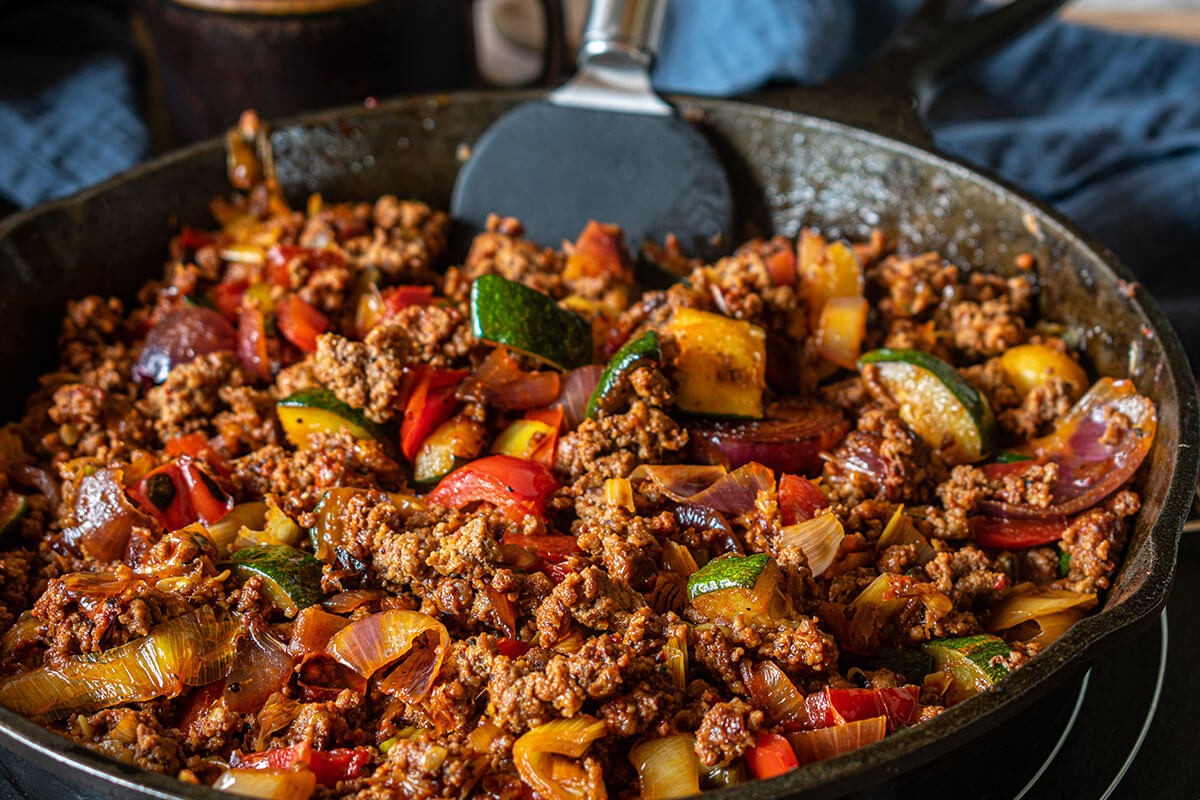TOP TIPS FOR COOKING GROUND BEEF AND AVOIDING COMMON MISTAKES
The versatility and convenience of ground beef has made it a staple ingredient in operations of all types and sizes. However, as with other high-consumption products, there are best practices operators can follow to avoid mistakes and make the most of every use. Our US Foods® experts from around the country have helpful tips to help you drive profitability, reduce waste and elevate your menu.
1. Don’t throw money down the drain
Operators often gravitate toward a higher fat ratio when selecting ground beef because they want that fat to contribute flavor. What they may not consider, though, is that in some applications, that fat simply melts away. Food Fanatics® Chef Austin Kosater from Austin, TX, reminds his customers, “75/25 is lovely, but if you’re smashing or cooking beyond medium, that fat renders out and your final yield price is actually higher than what an 80/20 would give you.” Don’t pay for product that goes down the drain; select the right lean-to-fat ratio for your specific application.
2. Buying fresh or frozen? It matters more
than you may think
Often, operators buy large cases of fresh ground beef, only to put part of the order in the freezer. Scott McCurdy, Culinary Director at US Foods, advises against this practice: “Your walk-in freezer at the restaurant will freeze product slower than the equipment used at the beef processor – freezing slowly will cause more purge and loss.” To avoid waste, buy frozen – or if your volume dictates, buy smaller cases of fresh ground beef.

3. Go lean when cooking with open flames
Big flare-ups can result from cooking meat with higher fat content. To avoid fires, Jeremiah Lavelle, US Foods COP Specialist from Philadelphia, suggests, “When char-grilling or broiling with an open flame, stick to 80/20 or leaner.” Then save the fattier blends for the griddle.
4. Prevent chub packaging from becoming
a physical contaminant
Many operators take advantage of the shape of the “chub” commonly used to package ground beef by simply cutting through the packaging to create burger “slices.” Mack Brown, COP Category Senior Manager at US Foods, explains that this practice could contaminate your ground beef patties with plastic particles from the wrapper. “Plus, no matter how evenly you think you’re slicing, consistency will be a challenge.”
Be sure to hand-patty your bulk ground beef into burger patties to reduce the chances of physical contaminants. Or to save labor, choose pre-shaped ground beef patties for your burger options and save the chubs for those bulk applications on your menu.
5. Cook ground beef in small batches
Be careful to not crowd your pans with too much meat. Tim Galligher, Food Fanatics Chef from Omaha, explains, “This prevents the moisture from fully evaporating and creates a steam that results in even more moisture.” To truly fry up and brown ground meat, Galligher suggests doing so in smaller batches – or choosing a larger pan.
6. Allow enough time to thaw frozen beef
Operators often pull ground beef from their freezers with little time to thaw it. “Not only can the beef cook unevenly from frozen – which can create food safety concerns – but the ice that exists in frozen ground beef melts and evaporates,” explains Erin Gonzalez, Food Fanatics Chef from Minneapolis. “This can result in a dried-out end product.” To prevent this, pull to your pars and be sure to fully thaw frozen beef before cooking.
7. Salt beef at the right time
When kitchens season beef in advance as part of their prep, the salt in it will pull moisture out of the patty. “This causes a chemical reaction with the protein in the beef,” explains Casey Erb, Food Fanatics Chef from Billings, Montana. “The result is a tough, dry burger.” Instead, when hand-patting burgers or other ground beef, salt right before cooking.
While common mistakes in planning inventory, prepping and cooking ground beef can occur, working with our US Foods Specialists can help to maximize the performance of these menu items. For more info and answers to your ground beef questions, book a free consultation with your Center-of-the-Plate (COP) specialist at www.usfoods.com/getsupport.

